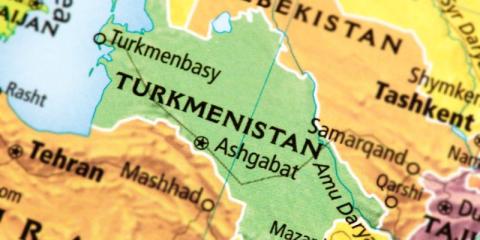Turkmenistan is a country that has managed to defy the odds and experience steady economic growth, even during the global financial crisis of 2009. The country is renowned for having the fourth largest natural gas reserves in the world and is a member of the Commonwealth of Independent States (CIS).
According to data from the International Monetary Fund (IMF), Turkmenistan’s economy is projected to grow by 12.4% in 2013 and 10.4% in 2014. This growth is not limited to Turkmenistan as neighboring countries like Azerbaijan and Kazakhstan are also showing significant growth in their respective economies.
The country’s GDP has been consistently growing since the 1990s, with some fluctuations along the way. However, the overall trend has been upward and Turkmenistan has become one of the fastest-growing economies in the world.
Turkmenistan has been able to maintain its growth rate due to its abundant natural resources, particularly natural gas. The country has been able to leverage its rich reserves of natural gas to attract foreign investment and drive economic growth. In recent years, Turkmenistan has focused on diversifying its economy, investing in industries like agriculture, mining and tourism to create new sources of revenue.
One of the key factors that have helped Turkmenistan’s economy grow is its stable political environment. The country has been able to maintain a stable political environment despite being located in a region that has experienced significant turmoil in recent years. This stability has allowed the government to focus on developing the country’s economy and create a favorable business environment.
Another factor that has contributed to Turkmenistan’s economic growth is its favorable geographical location. The country is situated at the crossroads of Europe and Asia and has easy access to major markets in both regions. This has made it easier for Turkmenistan to trade with its neighbors and expand its exports.
Despite its economic growth, Turkmenistan still faces several challenges that may impact its future growth. One of the biggest challenges the country faces is the lack of diversification in its economy. The country still relies heavily on its natural gas sector, and while it has taken steps to diversify its economy, it will take time to see the results of these efforts.
Another challenge that Turkmenistan faces is its lack of transparency in the business environment. The country is ranked poorly in terms of transparency by organizations like Transparency International. This lack of transparency makes it difficult for businesses to operate and for investors to know what they are getting into.
Despite these challenges, the outlook for Turkmenistan’s economy remains positive. The country is projected to continue its steady economic growth in the coming years and is expected to become a major player in the global economy.
In conclusion, Turkmenistan’s growth story is a testament to the country’s abundant natural resources and favorable political environment. The country’s focus on diversifying its economy and its favorable location at the crossroads of Europe and Asia will help it continue its growth trajectory. The future looks bright for Turkmenistan, and it will be interesting to see how it continues to develop and expand its economy in the coming years.
